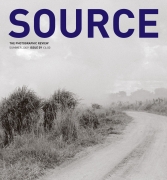Emergency Weather
Ulrika Ferm
Issue 59 Summer 2009
View Contents ▸
I set out to learn about Ireland through researching the photographic archive of the National Library in Ireland. I noticed that the wartime photographs were the only ones that were not properly dated. I approached the Library with a question about how the filing was done during the war. I never heard back from them, but it got me interested in censorship during the war.
On the 1 September 1939 the Irish Times predicted the weather as normal. On 2 September the forecast was missing and did not reappear until 10 September 1945. That afternoon of the 2 September the Dáil Éireann passed an Emergency Powers Act concerning wartime censorship including that of weather reports.
The Cardall Photograph Collection is made up of around 5,000 Irish landscape photographs. There are views of 218 towns and villages and surrounding landscapes that were intended to function as commercial postcards. They are catalogued as taken in the 30s and 40s by an unknown photographer. These photographs were taken at the time of the Act and, alongside the memories of people who lived through the period (quoted from interviews), I have attempted to create a registry of meteorological conditions of the time.
"I don't remember anything very different weather wise at that time. When it came to spring it just seemed to come, you got into your short socks and that was a sign that it was now skipping time. And remember Swithin's day; we used to live by Saint Swithin's day, which is the 15th of July. If it kept fine that day it was suppose to be fine for six weeks, so we were always taking notice of how the weather was that day and it generally rained, it generally rained..."
"The summers were normal, it would get fine coming up to the end of May and you'd get a month or two of fine weather, up to July... There was one year, I think it was 1942, we had a wet summer and the following summer was a glorious one. Coming on to the autumn it would turn chilly and cold and frost and by the 10th of November it could be that the frost had gone six inches into the ground, like cement! Once it came to the 10th of November you could be in for hard weather. We'd always get at least six inches of snow, or more, every winter and we don't have that any more."
"The summer seemed to be so long and so hot and so beautiful. I remember that it would be lovely sunny and then, all of a sudden, it would turn black and the thunder and the lightning and the rain were absolutely coming down in sheets and the water gushing down along the channel and then, say half an hour later, the sun would come out and everything would be dried up in no time. I don't think we had as much fog, there where mists, land mists and you'd see the animals, the cows and that, and you'd see all the steam coming out of their nostrils. And I do remember going out in the snow and beeing really over my knees in the snow and making the snowman and throwing snowballs and having soaking wet mittens on. And I can remember waking up and looking out the window and thinking oh my goodness! Look at this! I wanted to eat it. It looked so lovely. I've always thought since that winters were never so hard as what they were then."
"I think when you are a child you just accept the weather as it comes, don't you. It doesn't seem extraordinary to you no matter what happens. I woke up one morning in May and there was snow. I didn't think it was odd because I was only six. I stayed with an aunt and uncle in Drumna and I know I was very brown when I went home because I was out with the other kids all day. I was only there for a week. It must have been very good weather. It was in 1943, the year that there was the bombing of the North Strand."
"When July came, you could go anywhere. You could nearly sleep in the streets, it would be that warm."
"I can always remember when we were going to school in the winter and there were icicles hanging over the edges and things like that, which we haven't had in years. It was much colder winters."
"The weather was the coldest we ever had. February and it was always freezing cold and you could expect a lot of snow as well!"
For years Brendan McWilliams (who died in 2007) wrote a weather column called the 'Weather Eye' for the Irish Times. This is an excerpt from an article of 7 June 2004:
"But there was a lighter side to all this secrecy. Dr. John de Courcy Ireland, who needs no introduction to readers of this paper, tells of one such episode during the years of the Emergency: I remember a particularly hilarious issue of The Irish Times around 1943. In this issue there were columns and columns of reports of people falling into the Liffey or into the canals, inexplicable collisions, and other remarkable happenings in Dublin. They would have caused a casual visitor to the capital to suppose that at least fifty per cent of Dubliners had been drunk the previous day. But in fact there had occurred the worst fog I ever remember in Dublin and any mention of that fact had been rigorously suppressed to satisfy the censor."

















